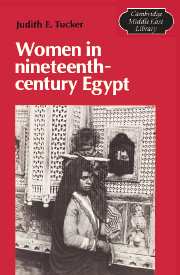Book contents
- Frontmatter
- Contents
- List of illustrations
- Acknowledgments
- List of abbreviations
- Note on transliteration and dates
- Introduction
- 1 Ploughs and shares: women, agricultural production, and property
- 2 Spindles and songs: women in urban occupations
- 3 Private and public life: women and the growth of the State
- 4 Women, resistance, and repression
- 5 The practice of slavery: women as property
- Conclusion
- Appendix: The court records, overview and sample
- Notes
- Glossary
- Bibliography
- Index
1 - Ploughs and shares: women, agricultural production, and property
Published online by Cambridge University Press: 28 October 2009
- Frontmatter
- Contents
- List of illustrations
- Acknowledgments
- List of abbreviations
- Note on transliteration and dates
- Introduction
- 1 Ploughs and shares: women, agricultural production, and property
- 2 Spindles and songs: women in urban occupations
- 3 Private and public life: women and the growth of the State
- 4 Women, resistance, and repression
- 5 The practice of slavery: women as property
- Conclusion
- Appendix: The court records, overview and sample
- Notes
- Glossary
- Bibliography
- Index
Summary
Women are crooked like scythes, but were it not for its crookedness, the scythe would not mow.
Egyptian proverb (Taymūr, 2940, p. 489)A calf raised by a woman will never plough.
Egyptian proverb (Taymūr, 1961, p. 332)Throughout the nineteenth century, Egypt remained a predominantly agrarian society: most of the country's wealth was produced, and the majority of its people lived, in the countryside. While the population multiplied over threefold between 1800 and 1900, from roughly 3,800,000 to 11,000,000, the percentage of the population inhabiting cities or large towns increased more modestly, from 10 to 14–15 per cent during the same period. The vast majority of Egyptians continued to live in the many small villages found along the banks of the Nile and throughout the fertile Delta where they worked the land for their own subsistence and for production of the agricultural surplus which constituted the bulk of the country's earnings abroad as well as the livelihood of its citizens at home. During the century, as new crops and technology, changes in land tenure patterns, increased state intervention, and, above all, accelerated integration into a world economy transformed the face of the Egyptian countryside, the peasant family endured as the basic social and economic unit.
It was this family, more than the State or corporative unit, which assigned work roles and regulated most aspects of its members' lives. The peasant family was producer, reproducer, and consumer; its internal logic was not, however, that of the capitalist enterprise. As Chayanov pointed out, the peasant producer strove not toward maximization of profit, but rather the achievement of a “-consumer balance” where and equilibrium is struck between meeting family demands for consumption and the drudgery of the labor required for additional consumption.
- Type
- Chapter
- Information
- Women in Nineteenth-Century Egypt , pp. 16 - 63Publisher: Cambridge University PressPrint publication year: 1985



